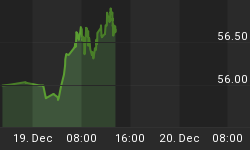Often, basics is all you need to know.
Understand the basics of the subject matter, break it down to its smallest parts -- and you've laid a good foundation for proper application of... well, anything, really. That's what we had in mind when we put together our free 10-lesson online Basic Elliott Wave Tutorial, based largely on Robert Prechter's classic "Elliott Wave Principle -- Key to Market Behavior." Here's an excerpt:
Successful market timing depends upon learning the patterns of crowd behavior. By anticipating the crowd, you can avoid becoming a part of it. ...the Wave Principle is not primarily a forecasting tool; it is a detailed description of how markets behave. In markets, progress ultimately takes the form of five waves of a specific structure.
The personality of each wave in the Elliott sequence is an integral part of the reflection of the mass psychology it embodies. The progression of mass emotions from pessimism to optimism and back again tends to follow a similar path each time around, producing similar circumstances at corresponding points in the wave structure.
These properties not only forewarn the analyst about what to expect in the next sequence but at times can help determine one's present location in the progression of waves, when for other reasons the count is unclear or open to differing interpretations.
As waves are in the process of unfolding, there are times when several different wave counts are perfectly admissible under all known Elliott rules. It is at these junctures that knowledge of wave personality can be invaluable. If the analyst recognizes the character of a single wave, he can often correctly interpret the complexities of the larger pattern.
The following discussions relate to an underlying bull market... These observations apply in reverse when the actionary waves are downward and the reactionary waves are upward.
1) First waves -- ...about half of firs t waves are part of the "basing" process and thus tend to be heavily corrected by wave two. In contrast to the bear market rallies within the previous decline, however, this first wave rise is technically more constructive, often displaying a subtle increase in volume and breadth. Plenty of short selling is in evidence as the majority has finally become convinced that the overall trend is down. Investors have finally gotten "one more rally to sell on," and they take advantage of it. The other half of first waves rise from either large bases formed by the previous correction, as in 1949, from downside failures, as in 1962, or from extreme compression, as in both 1962 and 1974. From such beginnings, first waves are dynamic and only moderately retraced.

Read the rest of this 10-lesson Basic Elliott Wave Tutorial online now, free!
Here's what you'll learn:
• What the basic Elliott wave progression looks like
• Difference between impulsive and corrective waves
• How to estimate the length of waves
• How Fibonacci numbers fit into wave analysis
• Practical application tips for the method
• And More
Keep reading this free tutorial today.
This article was syndicated by Elliott Wave International and was originally published under the headline Learn Elliott Wave Analysis -- Free. EWI is the world's largest market forecasting firm. Its staff of full-time analysts led by Chartered Market Technician Robert Prechter provides 24-hour-a-day market analysis to institutional and private investors around the world.
















